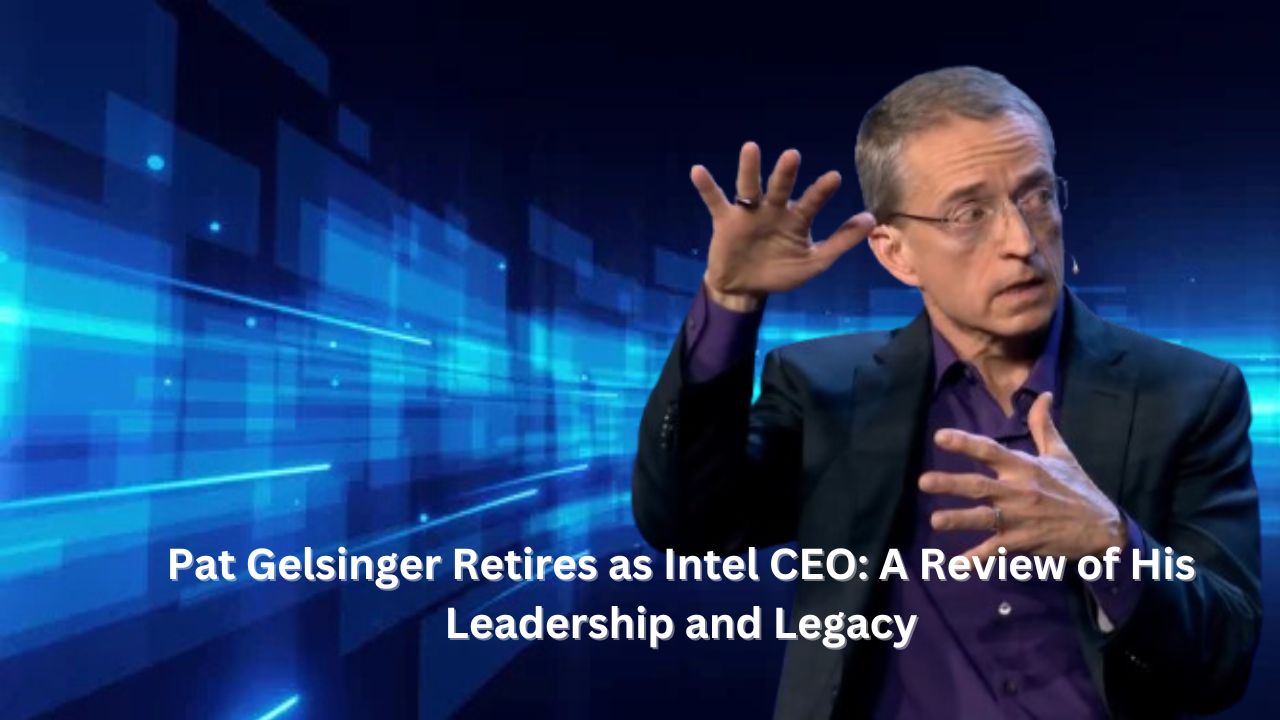On December 1, Intel (INTC) declared that Pat Gelsinger, the company’s CEO, had retired and resigned from the board of directors. Gelsinger, who oversaw the business for more than three years, made a major effort to bring Intel back to life in the face of growing difficulties in the semiconductor sector. Under his direction, Intel’s manufacturing capacities were increased, and the pressures of the global market were addressed. Gelsinger’s strategy plans intended for long-term growth in spite of many obstacles. Intel’s stock rose 3% in early trade after the announcement, indicating that investors were optimistic about the company’s future trajectory beyond Gelsinger.
Early Career and Rise to Intel CEO
for the age of 18, Pat Gelsinger started working for Intel in 1979, not long after graduating from Lincoln Tech with an associate’s degree. He still has a home in Oregon, where he worked for Intel for a large part of his career. Gelsinger co-wrote his first book on 80386 microprocessor programming in 1987.
Before departing Intel in 2009, Pat Gelsinger worked there for 30 years. In 2021, he returned as CEO, taking Bob Swan’s place.
Initiatives for Strategy: Reviving Intel
Pat Gelsinger started a bold plan to increase Intel’s manufacturing capacity as part of his effort to bring the business back to life. Among other things, a sizable, cutting-edge complex was built in Ohio. The Chips and Science Act provided substantial federal funding for the project, which aimed to increase production capacity and technological innovation.
Intel’s Obstacles Under His Direction
One of the major issues Pat Gelsinger took over as CEO of Intel was the company’s slowness in producing sophisticated chips, which let rivals like TSMC and AMD capture market dominance. By making significant investments in new manufacturing facilities and promoting process technology innovation, Gelsinger concentrated on reviving Intel. Production delays continued in spite of these measures, and Intel was criticized for excessive spending, which affected stock prices. By obtaining federal contracts and encouraging domestic chip manufacture, Gelsinger also aimed to establish Intel as a critical actor in U.S. national security while addressing the growing need for AI processors, an area where Nvidia was dominant.
Pat Gelsinger’s Vision for Intel: Strategic Growth and Future Initiatives
Pat Gelsinger put a lot of effort into enhancing Intel’s production capacity. In March 2021, he invested $20 billion in two plants in Arizona with the promise of a global foundry to compete with TSMC. He also set aside an additional $20 billion for two projects in Ohio in January 2022. Within four years, Gelsinger also promised to advance five manufacturing processes, including 18A.
Model of Business
Gelsinger changed Intel’s business strategy to include producing chips according to client specifications.
Franchise x86
By promoting customization, compatibility, and scalability and establishing the x86 Ecosystem Advisory Group with an emphasis on client, edge, and data center businesses, he improved Intel’s x86 franchise.
AI
Gelsinger made AI a top priority, investing in accelerators, bolstering Intel’s position in the data center AI market, and dominating the AI PC industry.
Other Domains
Additionally, he concentrated on enterprise networking, edge computing, network services, AI security, and connected technologies.
Opportunities in the Semiconductor Industry
Due to growing demand from a variety of industries and technical improvements, the semiconductor business presents substantial prospects. Advanced processors and creative manufacturing techniques are becoming more and more necessary as artificial intelligence, 5G, and the Internet of Things (IoT) expand in popularity. Businesses in the semiconductor industry may be able to access profitable industries such consumer electronics, industrial applications, automotive technology, and data centers. New growth opportunities are also presented by the worldwide movement toward more robust supply chains and the reshoring of semiconductor manufacturing. Remaining competitive in this ever changing business will need strategic investments in research and development.
